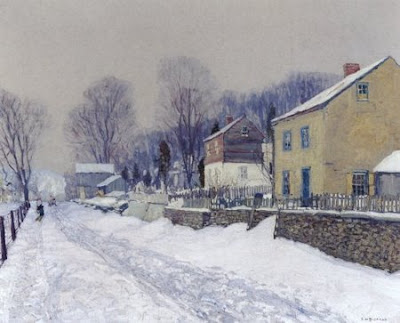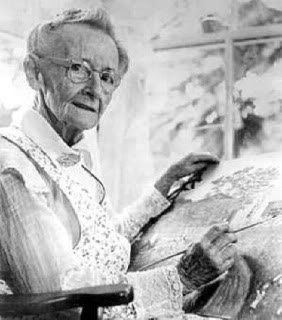 John James Audubon’s renowned book, Birds of America, made headlines recently as the world’s most expensive book, fetching over $10 million in auction. What makes this book so valuable?
John James Audubon’s renowned book, Birds of America, made headlines recently as the world’s most expensive book, fetching over $10 million in auction. What makes this book so valuable?For one, the 435 life-size prints of American birds and wildlife characterized in Audubon’s Birds of America surpass any of the paintings by the earlier ornithologist, Alexander Wilson and his nine-volume American Ornithology, of which only 268 species of birds are illustrated. Audubon’s depictions lack no detail and stray far from the stiff creations portrayed in Wilson’s work. He not only focuses his attention on birds and animals, but to the surrounding plant-life and environment in which they inhabited. The landscape and foliage are detailed, creating a natural scene and capturing his subjects in natural poses as how they appeared in the wild. Other factors contributing to the value, other than the style and beauty of the depictions, include his character, technique and the trends of the period.

Audubon was born in Haiti in 1785 to a French sea captain and his French mistress, but was raised in France by his father and stepmother where his interests lay in exploring the outdoors, hunting and fishing. When he turned 18, he moved to the United States and settled at their family estate near Philadelphia, called Mill Grove. There, he studied and drew birds, hunted and met his wife, Lucy Bakewell.
Misfortune struck nearly a decade later. His once-successful business of selling dry-goods took a turn for the worse and hard times ensued. Lacking a stable income and having been jailed briefly for bankruptcy, Audubon turned his hobby of bird-drawing into a serious project. Armed with only a gun, art materials and a young assistant, Audubon traveled down the Mississippi , living a rugged, hand-to-mouth existence, with the goal to paint all the birds of North America for future publication. By 1820, while Lucy supported the family by teaching, Audubon continued to work on Birds of America and extended his travel to Alabama and Florida. In 1826, he sailed to England with his partly finished collection and became an overnight success. His life-size paintings and glorified tales of the American wilderness earned him the title “The American Woodsman” and instantly gave him credit for publication.


For all his luck with money, Audubon was an ambitious character and naturalist. In the end, those qualities aided him greatly, enabling him to triumph over adversity and perform the tedious task of putting such a vast collection together. His experiences in the wilderness and his exquisite paintings collectively gave Audubon a name and instantly made his Birds of America a work of value.
His techniques in creating such realistic renderings of wildlife are also worth noting. On Audubon’s second trip into the wilderness, when visiting Alabama and Florida, he brought with him George Lehman, a professional Swiss landscape artist, to create some of the backgrounds and hired hunters to gather specimens for him. Rather than simply stuffing the specimens, Audubon would use wire to pose them in natural positions, often displaying them in action as if flying or feeding. Larger birds and animals would take hours for him to prepare and study before painting them. He would illustrate them in their natural habitats, ensuring an accurate adaptation of them through his personal observations.

Due to his own posing method, Audubon was able to create natural-looking models and therefore, paint natural-looking illustrations; different from the stiff, flat images that Wilson exhibited. Although, some claim his poses to be quite theatrical, Audubon argued that it was an artistic choice, allowing him to showcase specific lines and curves otherwise unnoticed. His paintings were elaborate and consisted of mainly of watercolor and pastel. When they went for print, the process was quite laborious, with colorists having to apply each color individually in an assembly-line fashion to ensure an impressive reproduction similar to the original. Costs were high; however the end result was well worth it. The last print was issued in 1838, making any original copy of the book a valuable piece.
The time period at which Audubon’s book was released also affected the value. At that time there was a great popular interest in science and the marvels of nature. The United States was still a mystery to Europeans and any story recounting the aspects of the American wilderness piqued interest. An insight into such a strange place was something that Audubon’s Birds of America was able to provide for those curious. With the fame of the book, he became known as a “man of science” and the leading naturalist of America.

Despite the book itself, Audubon’s initiative and personal achievement to complete such a collection, not to mention his technique and skill as an artist, and the 14 years and expense that it took to complete the process from the first painting to printing, have all contributed in determining the worth of Birds of America.
Works Cited:
http://www.audubon.org/john-james-audubon
http://www.audubonhouse.org/audubon/jja.cfm
http://www.notablebiographies.com/An-Ba/Audubon-John-James.html
Tyler, Ron. Visions of America: Pioneer Artists in a New Land, New York, 1983.
Researched and written by Shanna Seiberlich
MIR Appraisal Services, Inc.
Principal Appraiser: Farhad Radfar, ISA AM
307 N. Michigan Avenue, Suite 308
Chicago, IL 60601
(312) 814-8510
MIR Appraisal Services, Inc., is located just steps from the Art Institute of Chicago and the Chicago Cultural Center; please do give us a ring to set up an appointment for a verbal evaluation of your most prized works of art.




































